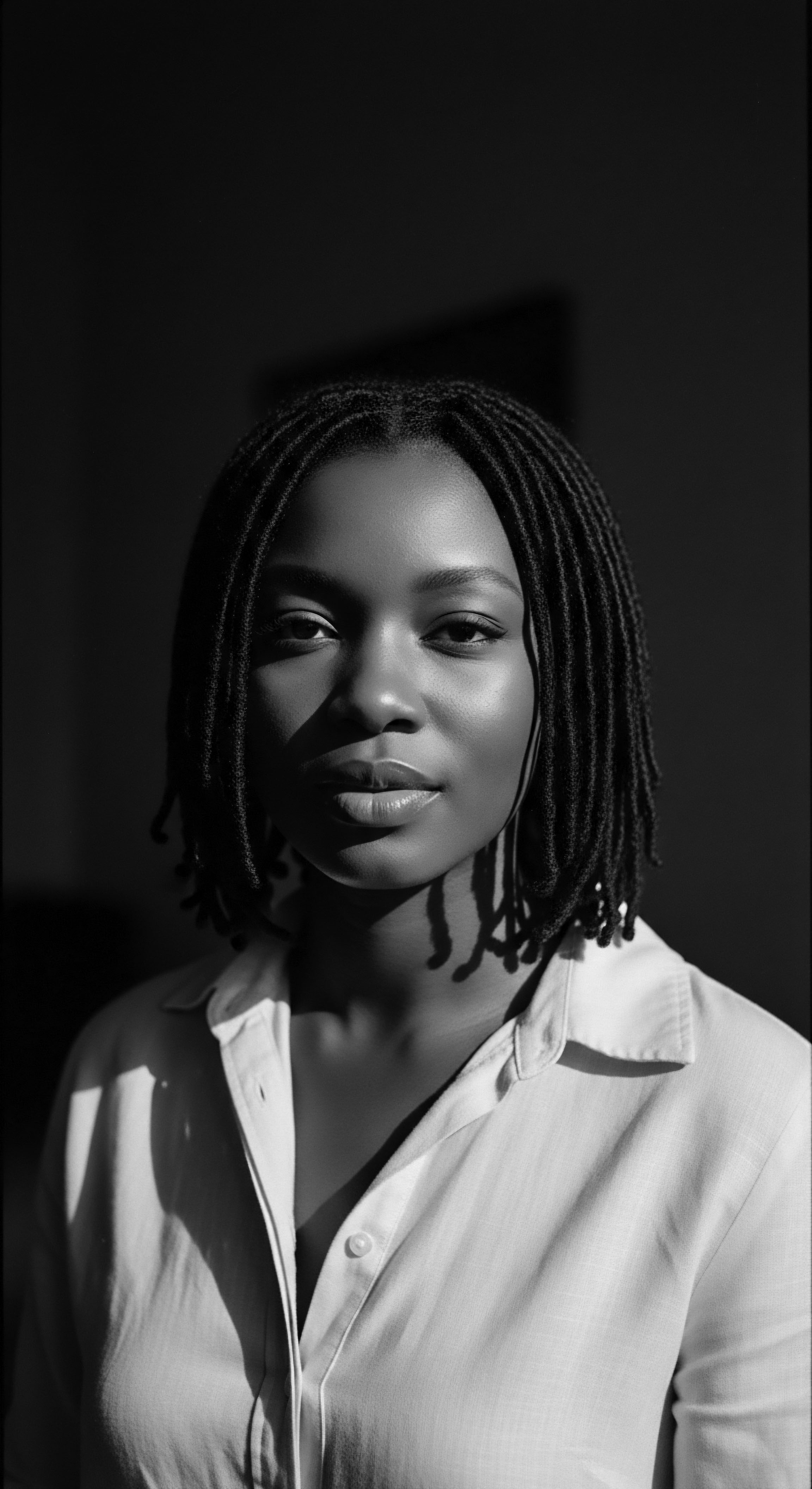
Roots
In the vibrant expanse of human experience, few elements carry the profound weight of identity, history, and communal belonging quite like hair. For those whose ancestry traces through the richly textured landscapes of Africa and its diaspora, hair is more than a biological outgrowth. It is a living chronicle, a silent orator of journeys both personal and collective. This exploration begins at the very root, considering what truly defines a protective hairstyle, not as a fleeting trend or a mere convenience, but as a practice deeply embedded in heritage, a legacy now finding its voice within the realm of legal protection.
The fibers that emerge from the scalp are more than keratin strands; they are threads of time, memory, and profound cultural memory. To understand the protective style, we must first look to the biology of textured hair, recognizing its unique architecture. Unlike straight or wavy hair, coils and kinks possess a particular elliptical cross-section and an irregular growth pattern, creating points of vulnerability along the shaft.
This inherent characteristic, a gift of evolutionary adaptation to diverse climates, simultaneously presents a need for deliberate care to prevent breakage and maintain vitality. The wisdom of protective styling, passed down through generations, intuitively addressed these biological truths long before modern science articulated them.
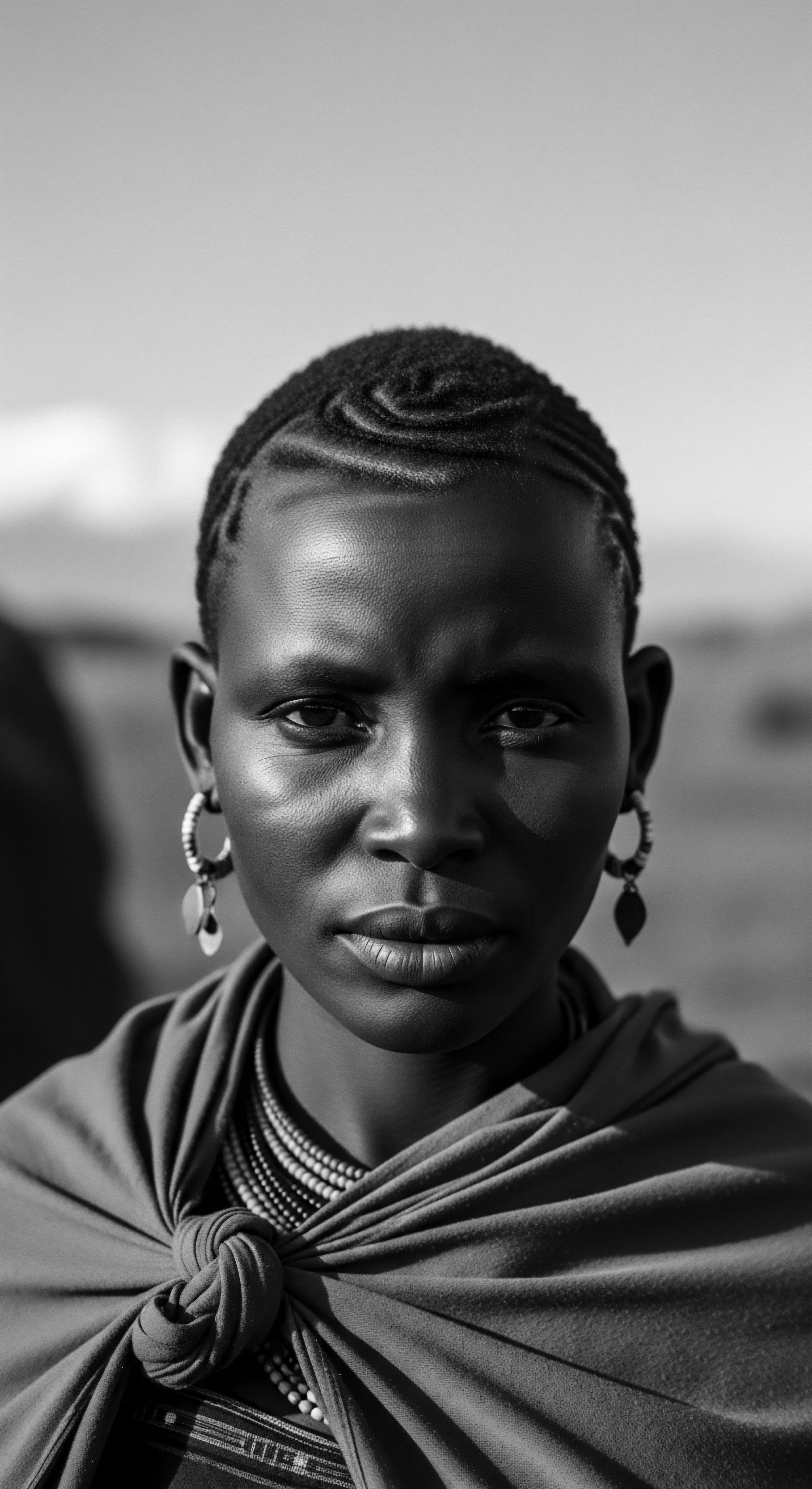
Hair Anatomy and Physiology from Ancestral Views
From the dawn of human adornment, communities recognized the intrinsic qualities of their hair. The meticulous care of textured hair, often involving intricate braiding and coiling, was not simply for aesthetics; it served a vital purpose. Ancient African civilizations, as far back as 3500 BCE, employed styling methods that minimized manipulation and shielded the hair from environmental stressors. These practices, born of necessity and knowledge, were rudimentary forms of what we now classify as protective styles.
The emphasis was on preserving length, promoting health, and protecting the scalp, all while communicating complex social markers. The hair’s natural inclination to coil, which makes it more susceptible to tangling and breakage if left unmanaged, was understood, and solutions arose from collective ingenuity. Early healers and hair artists intuitively grasped that certain manipulations could safeguard the delicate nature of textured strands, a wisdom preceding microscopic views of the hair shaft. This understanding demonstrates a sophisticated grasp of hair health without formal scientific terms.
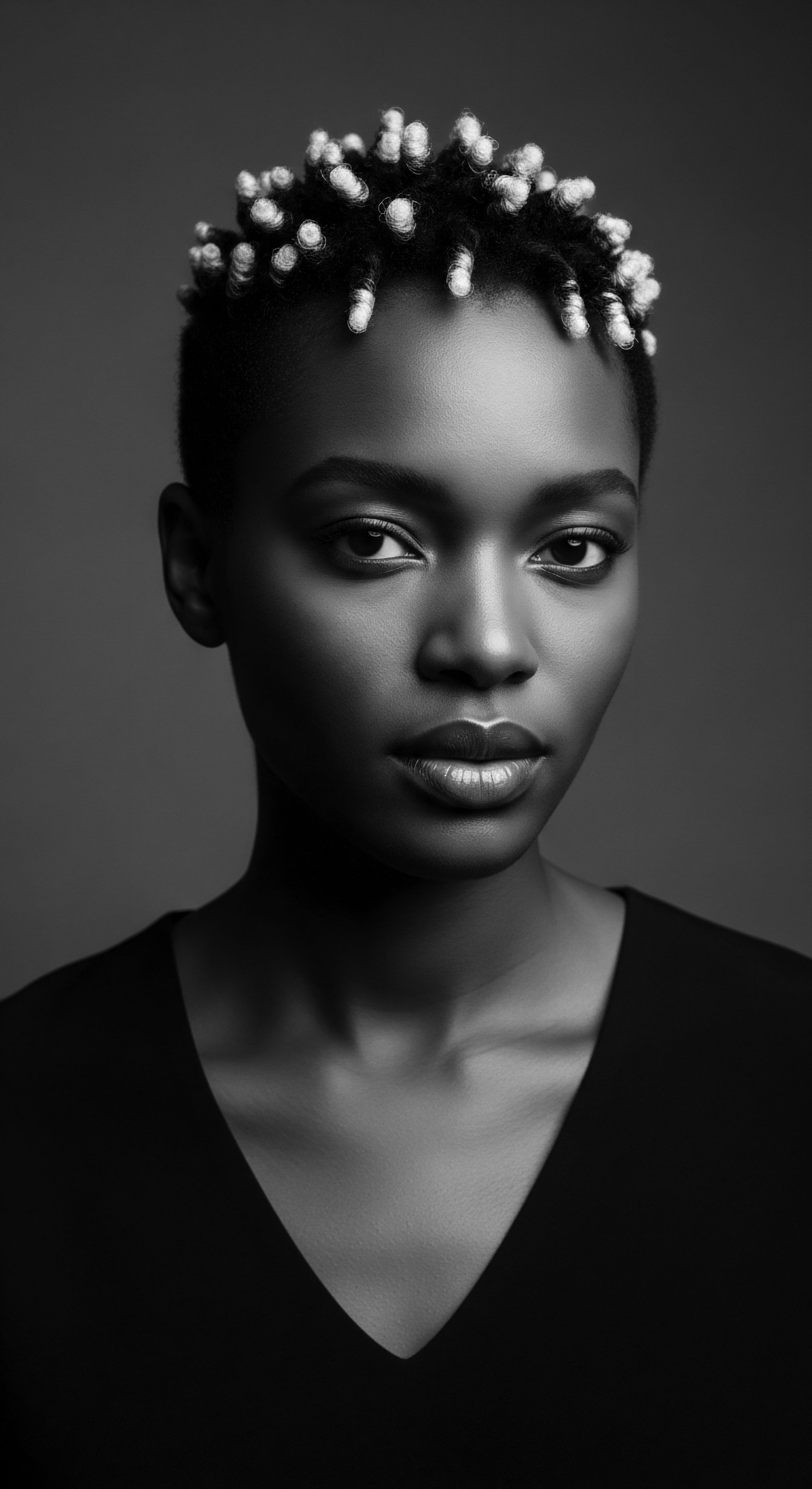
Textured Hair Classification Systems and Cultural Origins
While modern classification systems attempt to categorize textured hair by curl pattern (e.g. 3A, 4C), these frameworks, though useful for product formulation, often miss the depth of cultural significance. Ancestral societies did not need a numbered system to identify hair types. They observed, learned, and developed specific care rituals for the diverse hair textures within their communities.
Hair, in pre-colonial Africa, was a complex visual language, a symbol of identity, social rank, age, marital status, and even spiritual beliefs. The various hair types within a tribe were celebrated through distinct styles, each telling a story. For example, specific braiding patterns could denote a person’s tribal affiliation or even their readiness for marriage. The emphasis was not on changing the hair’s natural form but on working with it, celebrating its unique characteristics through a wealth of cultural styles that often inherently provided protection.
Hair, across various African societies, served as a living resume, communicating identity, status, and lineage without a single uttered word.
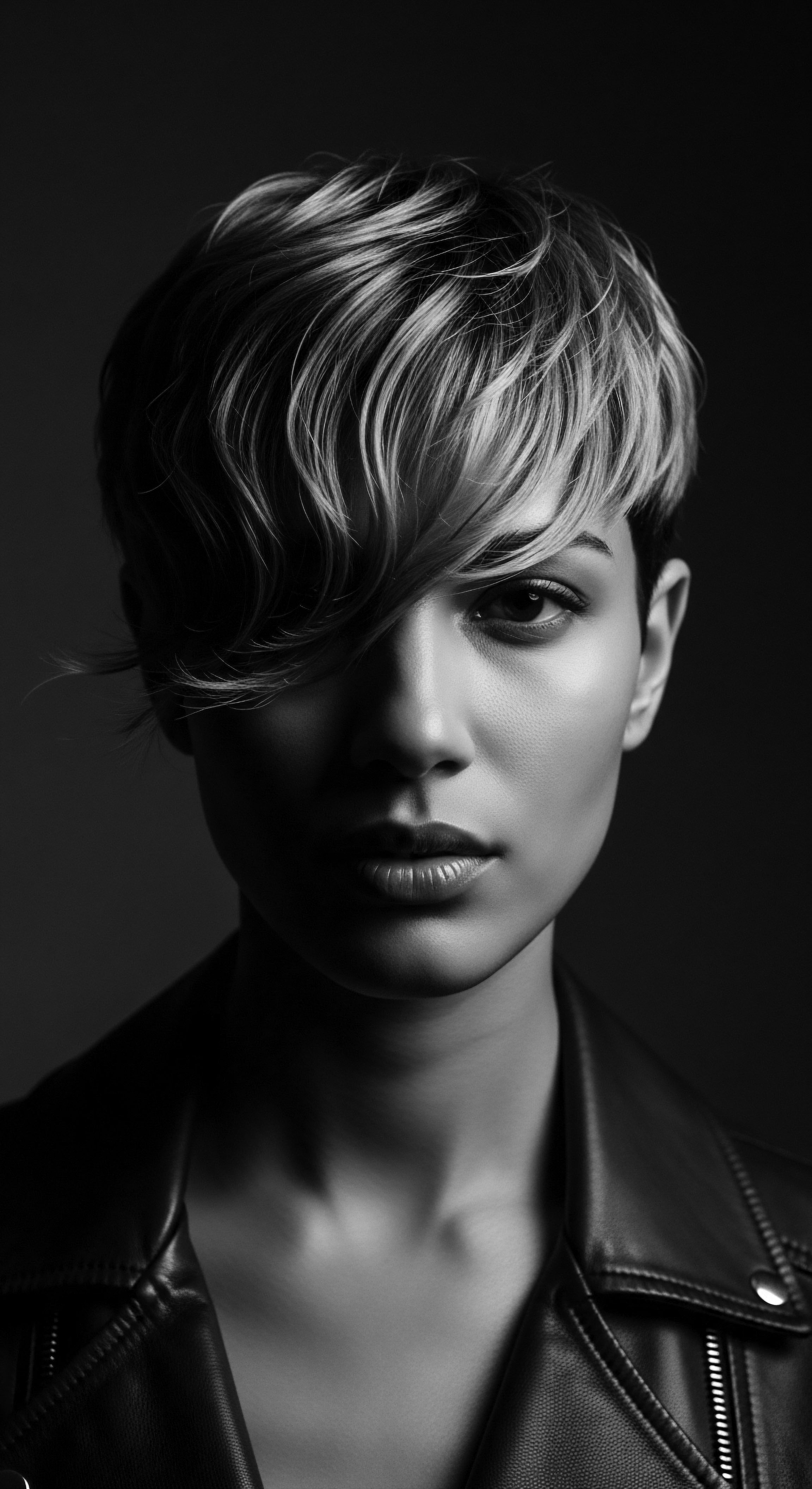
The Essential Lexicon of Textured Hair
The language surrounding textured hair today is a blend of modern scientific terms and a rich vocabulary passed down through generations. Terms like “coils,” “kinks,” “locs,” and “braids” are now widely accepted, but their roots run deep into the historical practices of Black and mixed-race communities. Before the advent of mass-produced hair products, ancestral wisdom informed the naming of hair types and care methods. Practices such as “threading” or “wrapping” were not just techniques; they were communal activities, often accompanied by oral histories and songs.
Understanding these terms connects us to the people who first created these styles and rituals, reinforcing the heritage within each strand. The very naming of styles like ‘cornrows’ or ‘bantu knots’ carries the echo of African origins and diaspora experiences.
Consider the significance embedded within the very naming of particular traditional styles:
- Cornrows ❉ This style, with its rows resembling cultivated fields, became a symbol of survival and communication during enslavement, as rice seeds or even escape routes were sometimes braided into the hair.
- Bantu Knots ❉ Known for their distinct coiled appearance, these knots are rooted in the Bantu-speaking peoples of Southern Africa, carrying the legacy of the Zulu tribe.
- Locs ❉ Beyond their modern prevalence, locs have ancient roots, revered in various African and diasporic spiritual traditions, seen as a direct conduit to the divine.
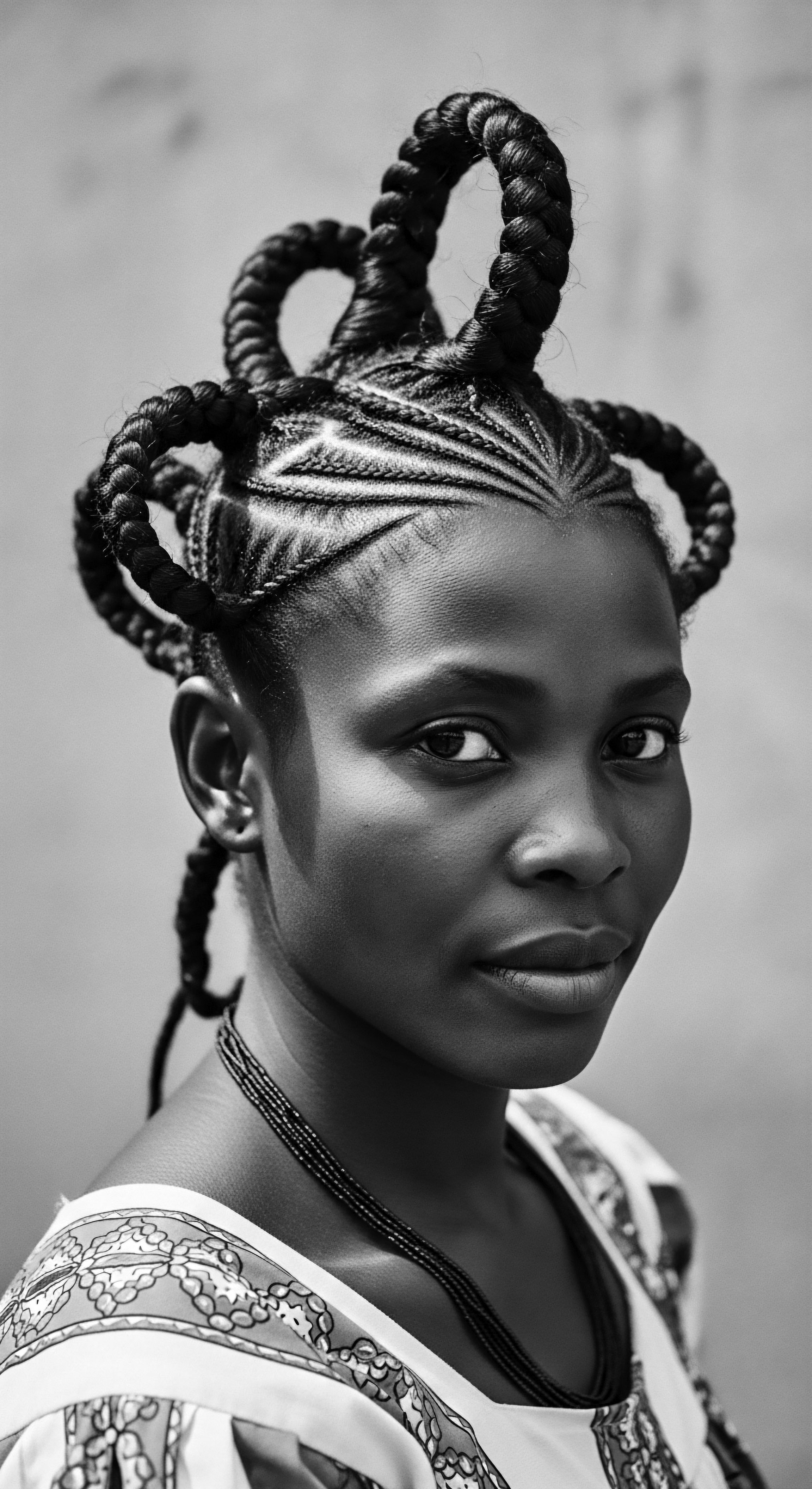
Hair Growth Cycles and Influencing Factors
The natural cycle of hair growth—anagen, catagen, telogen—is a universal biological process. For textured hair, however, this cycle interacts uniquely with care practices. The coiled structure can make it challenging for natural oils produced by the scalp to travel down the entire hair shaft, leading to dryness, which can predispose hair to breakage. Ancestral practices instinctively countered this by using oils, butters, and strategic styling.
Environmental factors also played a role. In sun-drenched regions of Africa, styles that enclosed the hair or covered the scalp offered protection from the elements, minimizing sun damage and moisture loss. Dietary influences, too, were recognized; the availability of nutrient-rich foods contributed to hair vitality, a holistic approach to wellness. The practice of covering hair with headwraps, for instance, not only carried immense cultural significance but also served to shield delicate strands from harsh conditions, preserving moisture.
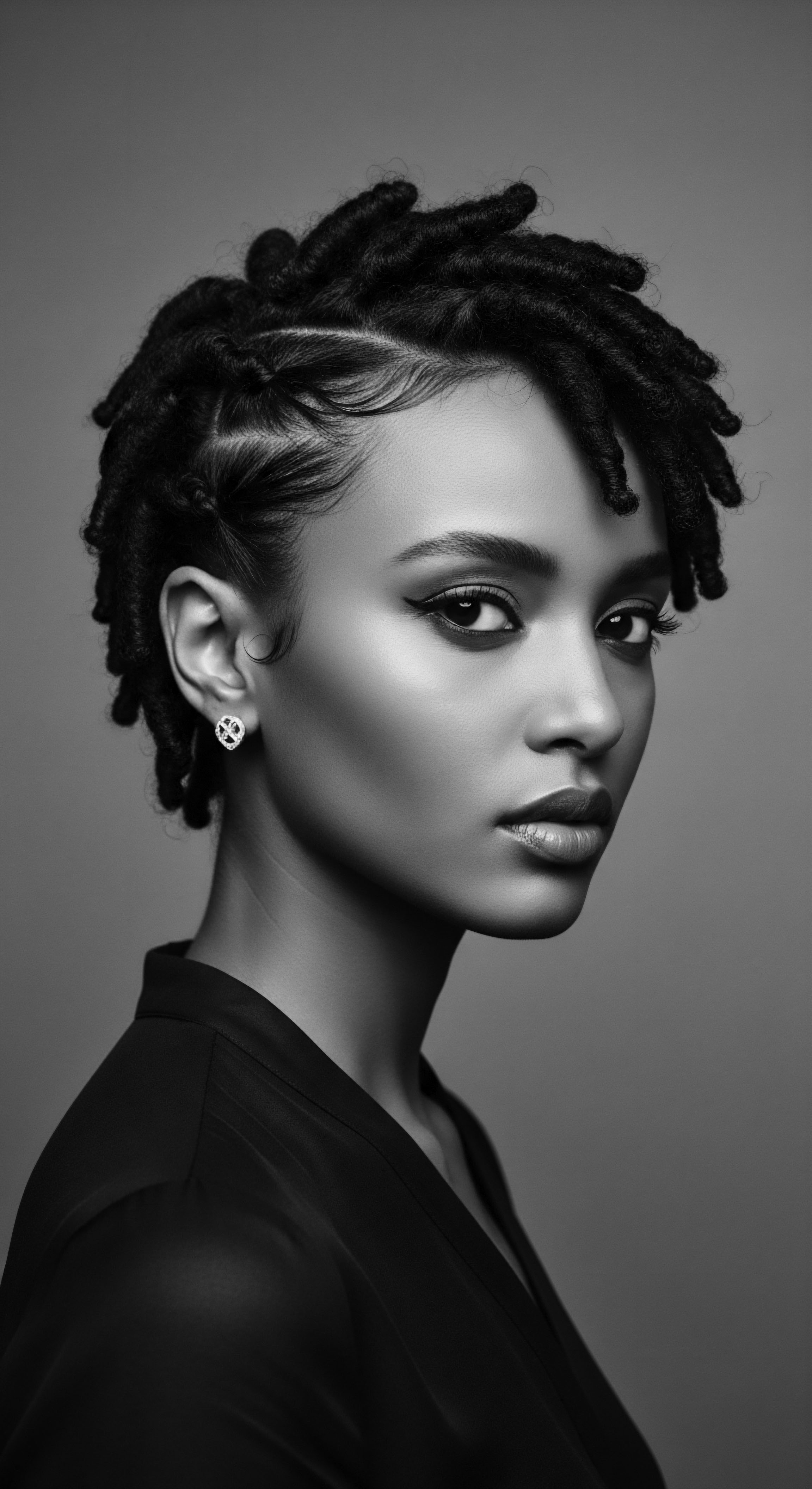
Ritual
The hands that shaped hair in ancient villages and diasporic communities engaged in more than mere styling; they participated in ritual. This section explores how protective hairstyles have been, and continue to be, integral to the art and science of textured hair styling, reflecting generations of accumulated wisdom and cultural continuity. These practices are not static museum pieces; they are living traditions, adapting while holding true to their origins.
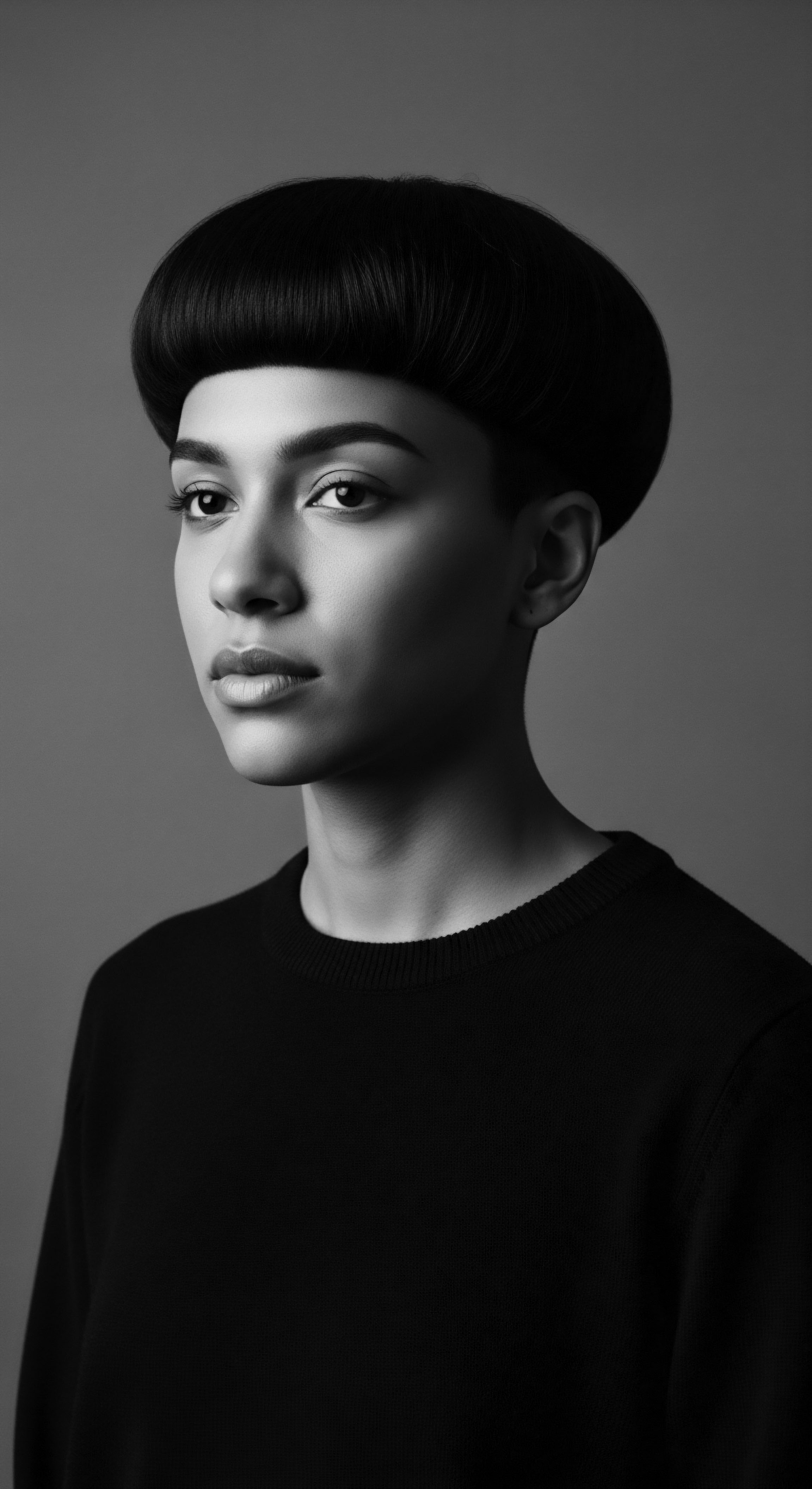
Protective Styling Encyclopedia and Ancestral Roots
The myriad of protective hairstyles we see today—braids, twists, cornrows, locs, bantu knots, and more—are direct descendants of ancient African practices. These styles were developed not simply for their visual appeal but as a practical necessity to preserve hair health, especially in harsh environmental conditions. The techniques were precise, often taking hours or even days, communal endeavors that strengthened bonds and transmitted cultural knowledge. Beyond protecting the hair from physical damage, these styles also communicated sophisticated messages about a person’s standing, family, and spiritual path.
The act of braiding itself was, and remains, a sacred ritual, often reserved for close family members, signifying trust and affection. This deep-seated heritage means that when one chooses a protective style, they are not just making a hair choice; they are participating in an ongoing conversation with their ancestors, a silent affirmation of resilience and identity.
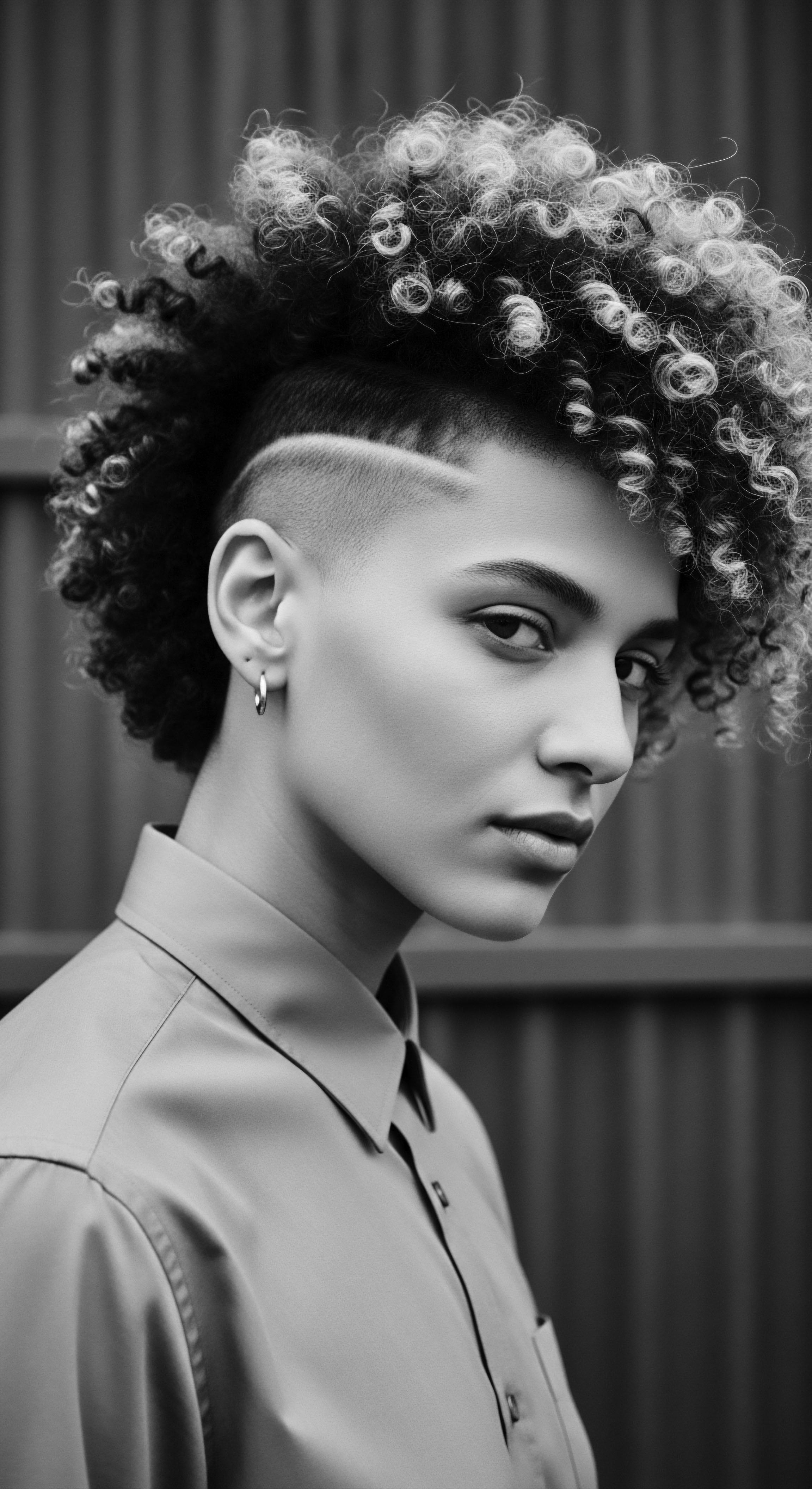
Natural Styling and Definition Techniques for Heritage?
The spectrum of natural styling techniques for textured hair, from simple wash-and-gos to intricate updos, all draw from an ancestral understanding of how to honor the hair’s natural curl pattern. Techniques such as finger coiling, twisting, and braiding are not modern inventions; they are refinements of methods practiced for millennia. These approaches minimize the need for heat or chemical alteration, allowing the hair to exist in its most authentic state. The emphasis on definition and elongation, common goals in contemporary natural hair care, finds its parallel in historical styles that meticulously arranged curls and coils.
The goal, then as now, was to showcase the inherent beauty of textured hair, allowing it to move and flow while remaining safeguarded. The traditional methods of setting hair without heat, such as wrapping and banding, echo the same intention of preserving the hair’s integrity, an ancient wisdom that science now affirms as beneficial for cuticle health.
| Ancestral Practice (Historical Context) Intricate tribal braiding for social status, spiritual connection, and warmth/protection (e.g. Fulani braids). |
| Modern Protective Styling Approach (Heritage Link) Box Braids, Cornrows, Knotless Braids that protect ends, retain length, and allow for low manipulation while acknowledging cultural roots. |
| Ancestral Practice (Historical Context) Hair wrapping with fabrics to protect from sun, dust, and as a symbol of dignity. |
| Modern Protective Styling Approach (Heritage Link) Headwraps and turbans worn for style, hair preservation, and as a reclamation of cultural pride. |
| Ancestral Practice (Historical Context) Coiling and twisting natural hair, often with muds or ochre, for specific community roles (e.g. Himba). |
| Modern Protective Styling Approach (Heritage Link) Two-Strand Twists, Flat Twists, and Bantu Knots for defining curl patterns, stretching hair, and minimizing shrinkage. |
| Ancestral Practice (Historical Context) Communal hair grooming rituals fostering social bonds and knowledge transfer. |
| Modern Protective Styling Approach (Heritage Link) Salon visits or home hair styling sessions where community, shared experience, and intergenerational learning continue to flourish. |
| Ancestral Practice (Historical Context) The continuity of these practices reveals how ancient needs and expressions continue to shape contemporary choices in protective styling. |

Wigs and Hair Extensions Mastery and Historical Context
The use of wigs and hair extensions might seem like a modern phenomenon, yet their roots stretch back to antiquity. Ancient Egyptians, for instance, wore elaborate wigs for cleanliness, status, and protection from the sun. In many African societies, hair extensions made from plant fibers or animal hair were incorporated into natural styles to add length, volume, or to achieve specific ceremonial looks. This practice speaks to a long-standing understanding of hair as a medium for artistic expression and adaptation.
The skill involved in creating and integrating these extensions was a specialized craft, a testament to the ingenuity of early hair artists. Today, wigs and extensions continue to serve a protective function, allowing natural hair to rest from daily manipulation, chemicals, and heat, while also allowing for diverse stylistic expressions. This heritage of augmentation for both adornment and preservation underscores a consistent approach to hair care across time.
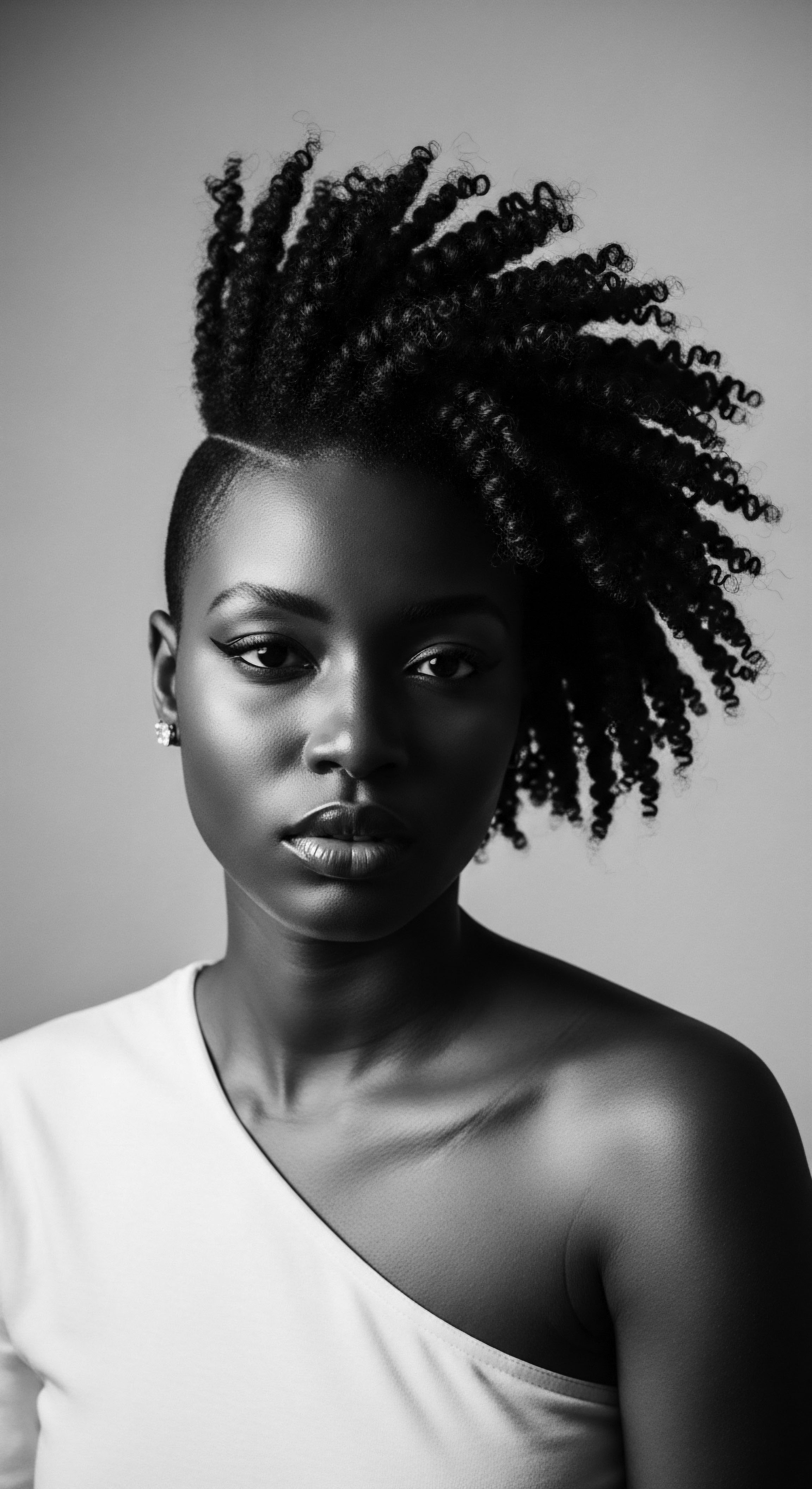
Heat Styling and Thermal Reconditioning Approaches?
The practice of using heat to alter hair texture is not new, but its historical context for textured hair differs significantly from modern applications. While some historical methods involved warming tools, the intention was often to manage or prepare hair for protective styles, not necessarily to permanently straighten it. The widespread adoption of thermal reconditioning and chemical relaxers in the diaspora, particularly during periods when Eurocentric beauty standards were enforced, led to significant hair damage and loss for many Black women. The contemporary natural hair movement, in part, arose as a rejection of these damaging practices, urging a return to methods that prioritize hair health.
Protective styling, therefore, stands as a counter-narrative to excessive heat use, offering a way to achieve versatile looks while safeguarding the hair’s natural integrity. A deep respect for the hair’s natural state, a principle steeped in ancestral wisdom, guides this approach.
The journey of textured hair through history reveals how deeply connected beauty standards are to social hierarchies and the enduring power of self-acceptance.
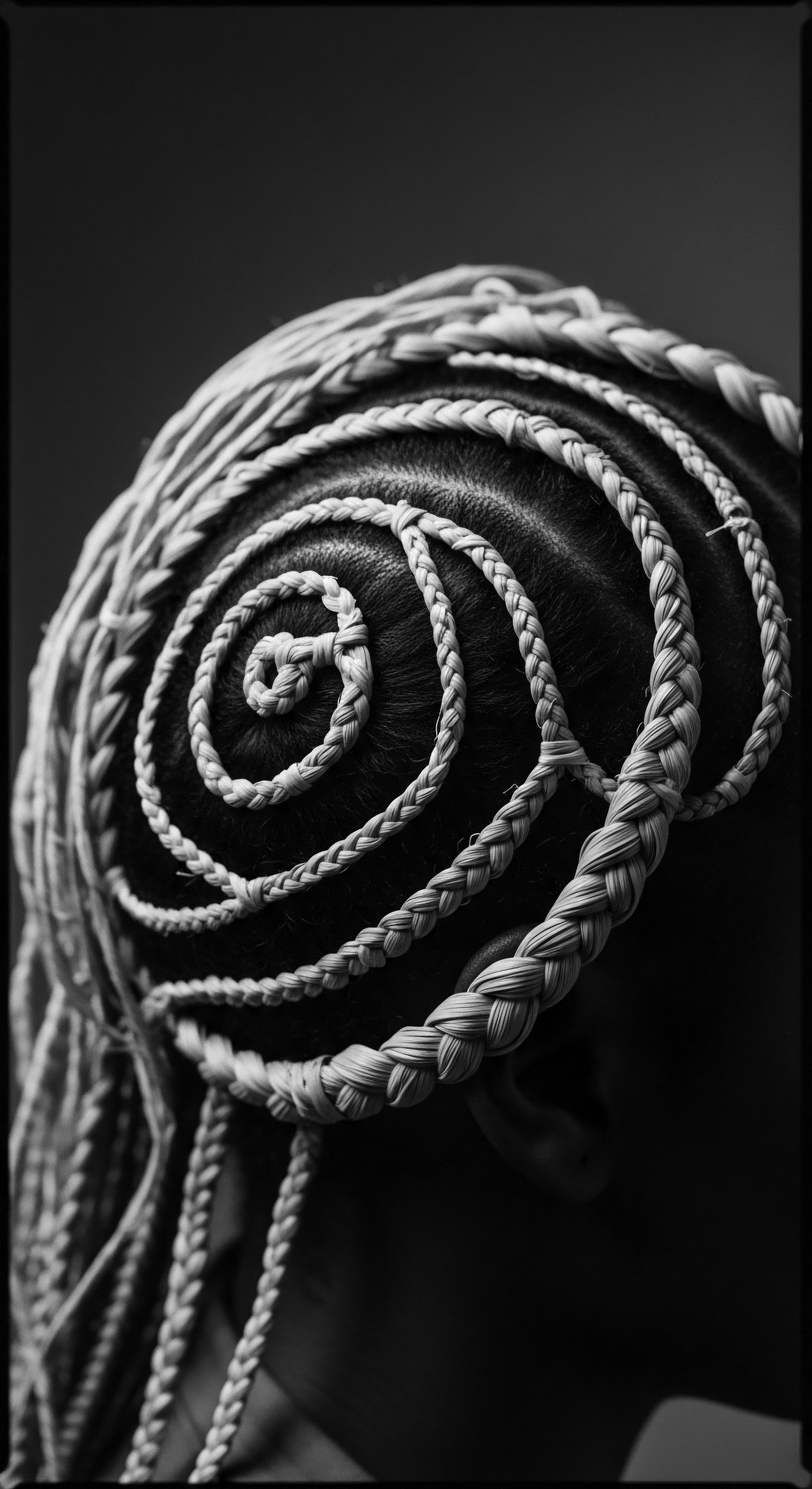
The Complete Textured Hair Toolkit
The toolkit for textured hair care has evolved from simple, naturally derived implements to sophisticated modern devices, yet the underlying principles remain consistent. Ancestral communities used carved combs made from wood or bone, often adorned with symbolic carvings, to detangle and style. Fingers were always the primary tool for braiding and twisting, emphasizing a gentle, hands-on approach. Natural materials like clay, ochre, and plant-based oils were not just products; they were integral tools in the hair care ritual, providing cleansing, moisture, and protective barriers.
Today’s specialized combs, brushes, and accessories, while technologically advanced, serve the same fundamental purposes ❉ detangling with care, applying products evenly, and maintaining styles. The continuity of these tools, from the ancient comb to the modern wide-tooth variant, reflects an unbroken lineage of hair care practices designed to protect and honor textured hair.
Consider the essential elements of a historical textured hair toolkit and their contemporary parallels:
- Hand-Carved Combs ❉ Ancient combs, often crafted from wood or bone, featured wide teeth, an intuitive design for navigating coils and preventing breakage. Their modern descendants are wide-tooth combs and flexible detangling brushes, engineered to minimize friction and tension on delicate strands.
- Natural Fats and Oils ❉ Shea butter, palm oil, coconut oil, and various herbal infusions were staples, providing moisture and a protective seal. Today, these same ingredients remain prominent in hair care products, often alongside scientific advancements that allow for deeper penetration and stability.
- Plant Fibers and Adornments ❉ Used for extensions, hair wraps, and decorative elements like beads and cowrie shells, these materials added length, artistry, and symbolic meaning. Contemporary equivalents include synthetic hair extensions, silk scarves, and diverse hair jewelry, often chosen to replicate traditional aesthetics or offer protective benefits.
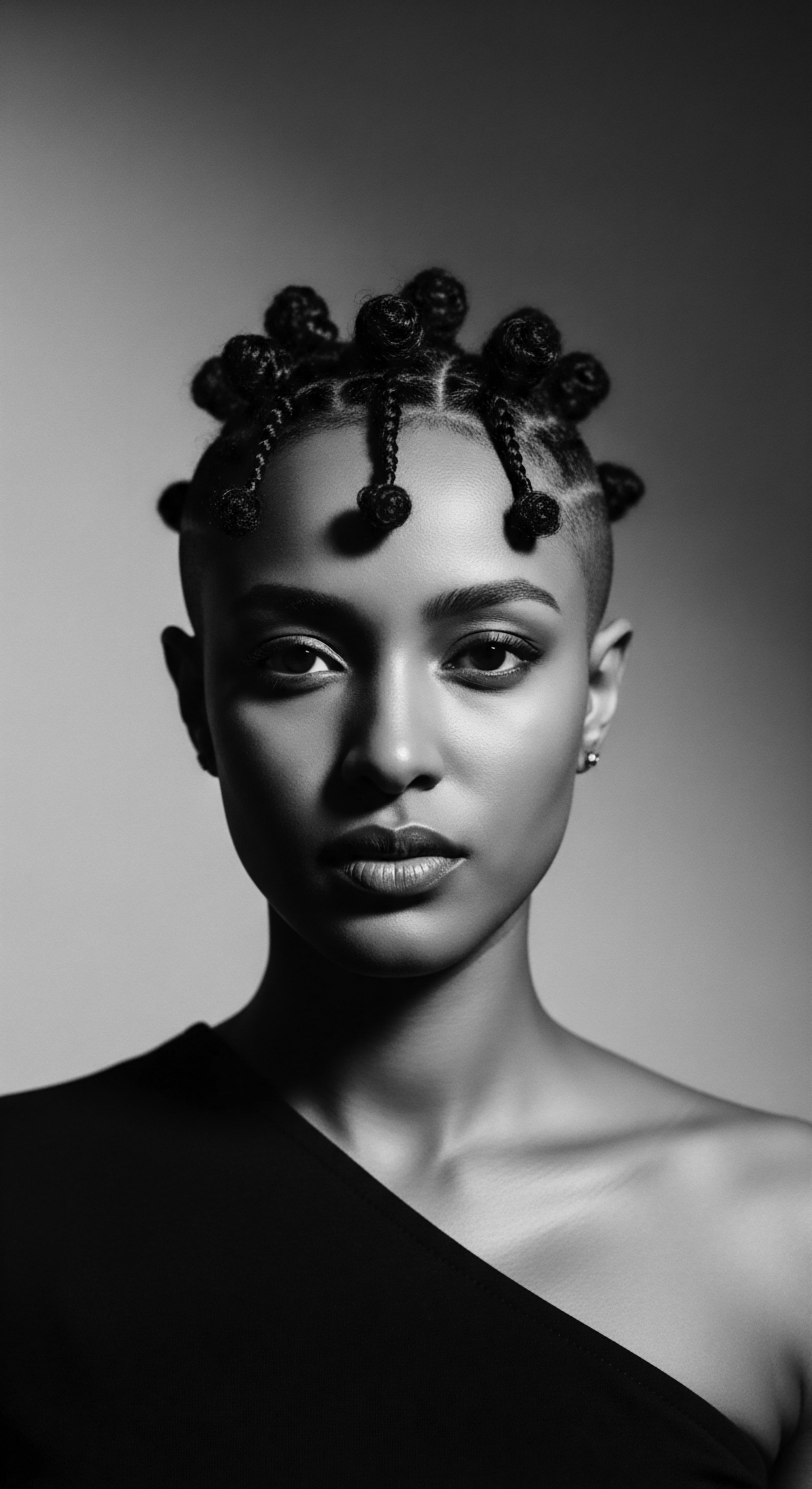
Relay
The story of protective hairstyles is a relay race across time, each generation passing the baton of wisdom, adaptation, and defiance. This final exploration delves into the deeper, sometimes turbulent, currents of how protective hairstyles have been shaped by and, in turn, reshaped notions of heritage and legal recognition. It is here that the scientific merges with the social, and cultural practice demands its rightful place in the codified world of law.
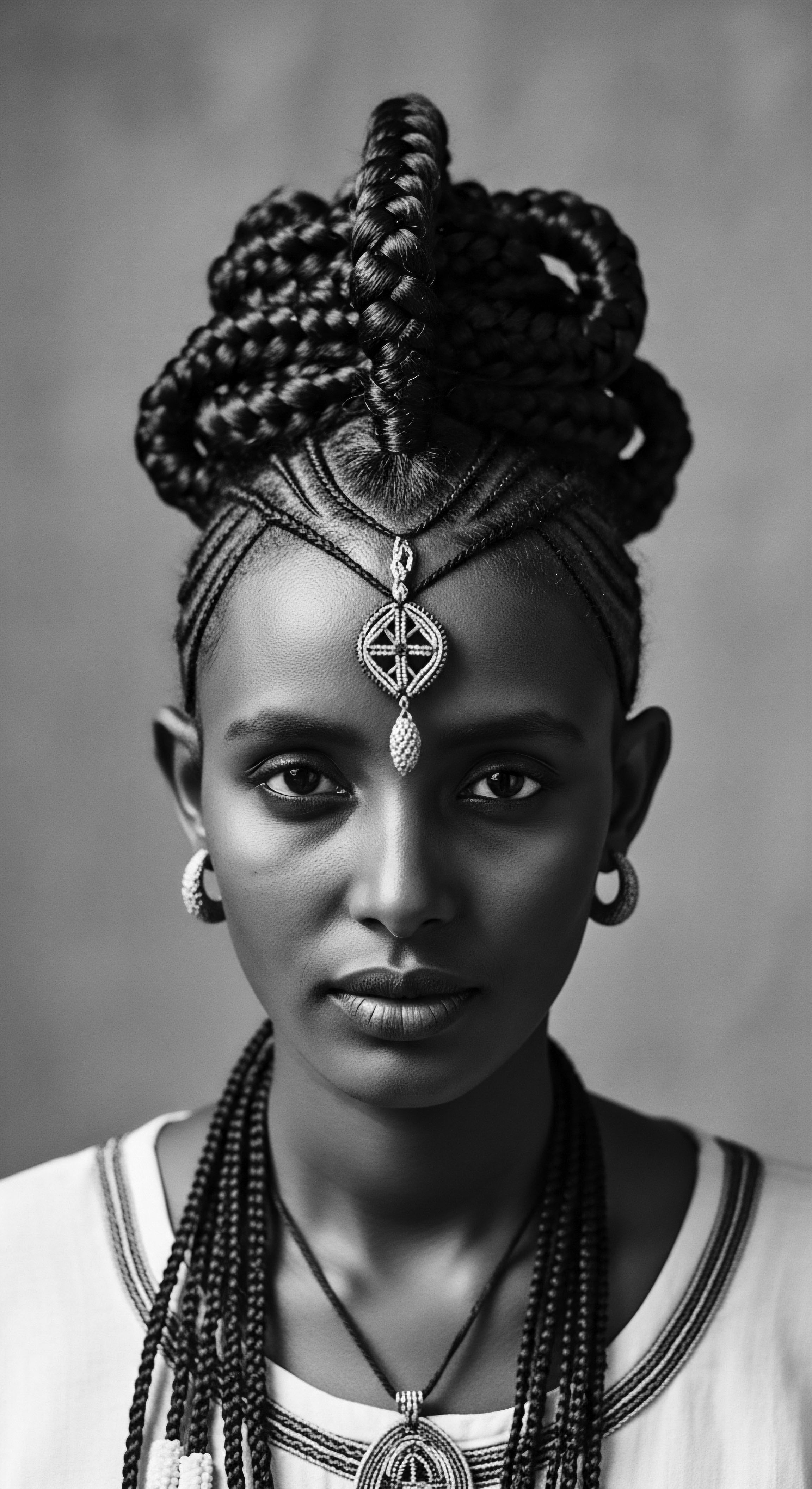
Legal Protection for Textured Hair Heritage?
The legal recognition of protective hairstyles marks a significant moment in the ongoing struggle for equity and cultural affirmation. For centuries, Black and mixed-race individuals faced discrimination in schools, workplaces, and public spaces for wearing natural or traditional styles. Such policies often deemed coiled, kinky, or braided hair as “unprofessional” or “distracting,” forcing individuals to chemically alter their hair, with adverse effects on health and self-perception. The CROWN Act (Creating a Respectful and Open World for Natural Hair), first passed in California in 2019 and now adopted by many US states, represents a legislative effort to dismantle this systemic hair discrimination.
This legislation explicitly prohibits discrimination based on hair texture or protective hairstyles, such as braids, locs, twists, and knots, recognizing them as integral to racial identity and heritage. The enactment of such laws underscores a societal acknowledgment that hair, for Black communities, is not merely an aesthetic choice; it is a profound expression of heritage, a connection to ancestry, and a symbol of resilience. The history of this discrimination is lengthy, with legal challenges dating back decades, often with unfavorable rulings that upheld policies banning braids by arguing they were not a “product of natural hair growth.”
The psychological toll of hair discrimination is significant. Studies and community dialogues reveal that individuals often experience internalized racism, anxiety, and chronic stress when confronted with societal pressures to conform to Eurocentric beauty standards. The very act of choosing a protective style, therefore, becomes an act of self-preservation and cultural assertion in a world that has often sought to suppress such expressions.
The CROWN Act offers a legal shield, allowing individuals to carry their heritage with dignity, challenging the unspoken rules that have historically excluded and marginalized. This movement is a testament to how deeply hair identity is intertwined with mental well-being and social belonging.
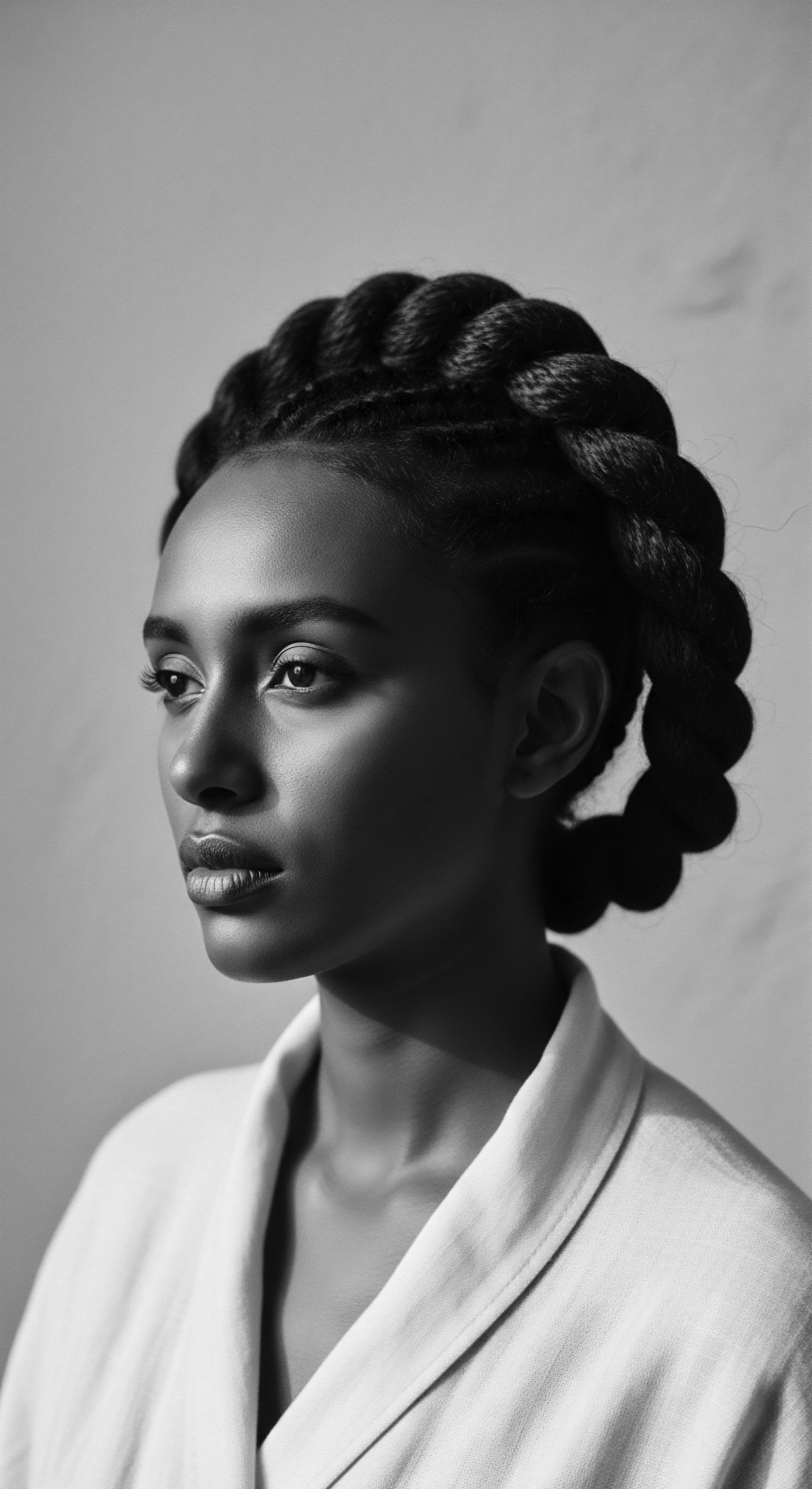
Hair as Cultural Signifier and Legal Battleground
Across diverse cultures, hair has always served as a potent signifier of identity, status, and belief. For Black communities, this role became even more charged in the context of forced migration and systemic oppression. During the transatlantic slave trade, the deliberate shaving of African hair was a primary act of dehumanization, a calculated attempt to erase cultural identity and sever ties to homeland and heritage. Despite these brutal efforts, hair traditions persisted, often secretly, becoming coded forms of resistance and communication.
Braids, for example, were sometimes used to hide rice seeds for survival or even to map escape routes. This historical backdrop provides vital context for understanding why protective hairstyles are so fiercely guarded today. They are not merely functional; they are repositories of ancestral memory, symbols of survival against profound adversity. When these styles are challenged in professional or academic settings, it echoes centuries of efforts to control and diminish Black identity.
The legal battles fought over hair discrimination are thus not battles over superficial appearance; they are battles over fundamental rights to cultural expression and freedom from racial bias. They represent the continuing fight for the right to wear one’s history, visibly and proudly.
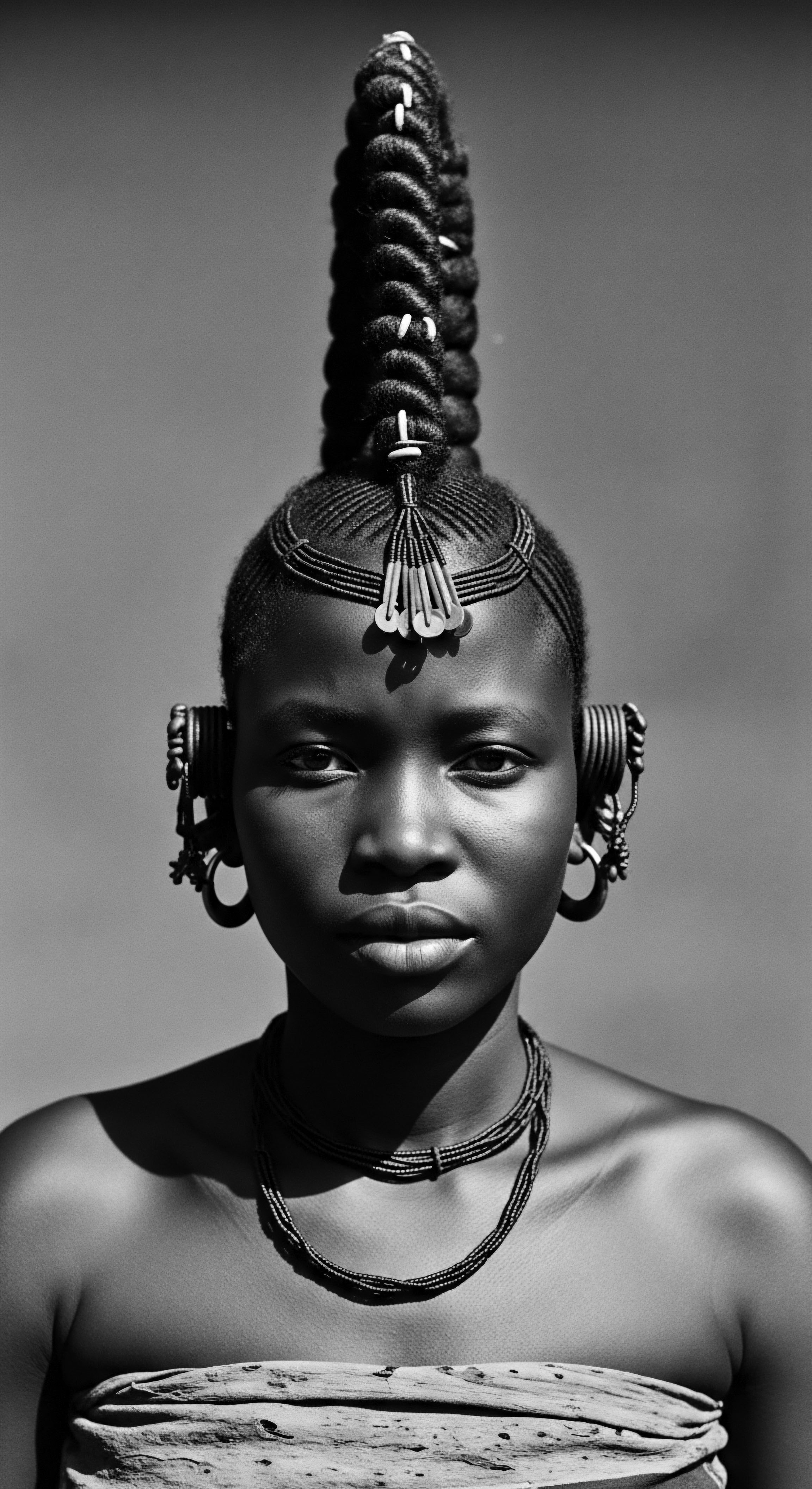
The Interplay of Science, Society, and Self-Acceptance in Heritage?
The scientific understanding of textured hair supports the efficacy of protective styles, validating ancestral practices with modern data. The mechanical properties of coiled hair mean it is more susceptible to damage from excessive manipulation, tension, and environmental exposure. Protective styles, by minimizing these stressors, reduce breakage and promote length retention. This scientific backing strengthens the argument for legal protection, demonstrating that these styles are not simply a matter of preference but a vital component of hair health for many.
Beyond the biological, the societal embrace of natural hair, spurred by movements like “Black Is Beautiful” in the 1960s, represents a powerful act of self-acceptance and defiance against Eurocentric beauty standards. This cultural shift has had a ripple effect, contributing to increased visibility and ultimately, legislative action. The individual’s journey toward embracing their natural hair, often aided by supportive online communities, reflects a reclamation of identity and a profound connection to heritage that transcends mere aesthetics. This is a story where personal choice meets historical resilience, where scientific understanding supports cultural practice, and where legal frameworks begin to align with lived experience.
The journey of reclaiming textured hair is a vibrant testament to resilience, transforming personal beauty choices into powerful statements of cultural self-determination.
The journey of textured hair care, from ancient practices to modern understanding, illustrates a continuous dialogue between inherited wisdom and contemporary knowledge. The foundational purpose of protective hairstyles — to safeguard the hair’s integrity — remains a consistent thread, whether viewed through the lens of:
- Historical Practice ❉ Emphasizing minimal manipulation and natural ingredients to preserve length and signify status.
- Scientific Understanding ❉ Confirming how reducing friction, tension, and environmental exposure supports the health of fragile coiled strands.
- Societal Acceptance ❉ Advocating for policy changes that respect and protect the right to wear natural and traditional styles as expressions of identity.
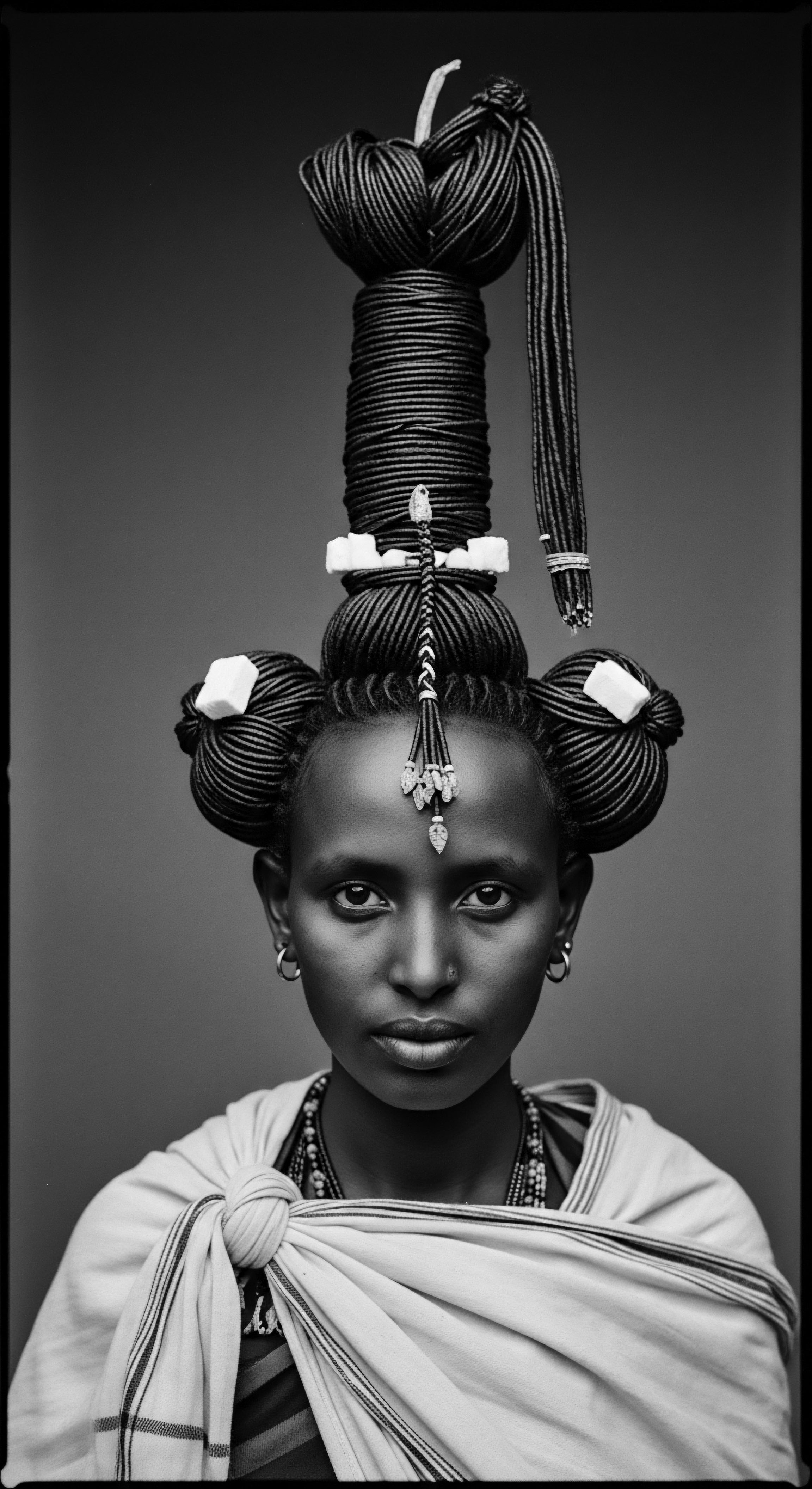
Reflection
As we close this dialogue, we recognize that what defines a protective hairstyle, in the context of heritage and legal protection, extends beyond technique or statute. It resides within the very spirit of the strand, a testament to endurance, creativity, and identity. Each coil, kink, and loc holds the memory of hands that meticulously braided, of whispers shared in communal grooming rituals, and of the unwavering determination to maintain a connection to self and ancestry. From the ancient African kingdoms where hair spoke volumes about status and spirituality, through the painful passages of enslavement where hairstyles became silent maps of freedom, to the contemporary movements demanding legislative respect, the hair of Black and mixed-race individuals has remained a vibrant, unyielding archive.
The CROWN Act, and similar legal strides, do not simply protect a style; they guard a heritage, affirming that the very expression of one’s cultural legacy is a fundamental right. This ongoing unfolding of understanding, from elemental biology to profound cultural resonance, reminds us that the hair on our heads is never merely hair. It is a living, breathing testament to who we were, who we are, and who we are becoming, deeply rooted in the soil of ancestral wisdom, ever reaching toward the unbound helix of future possibilities.
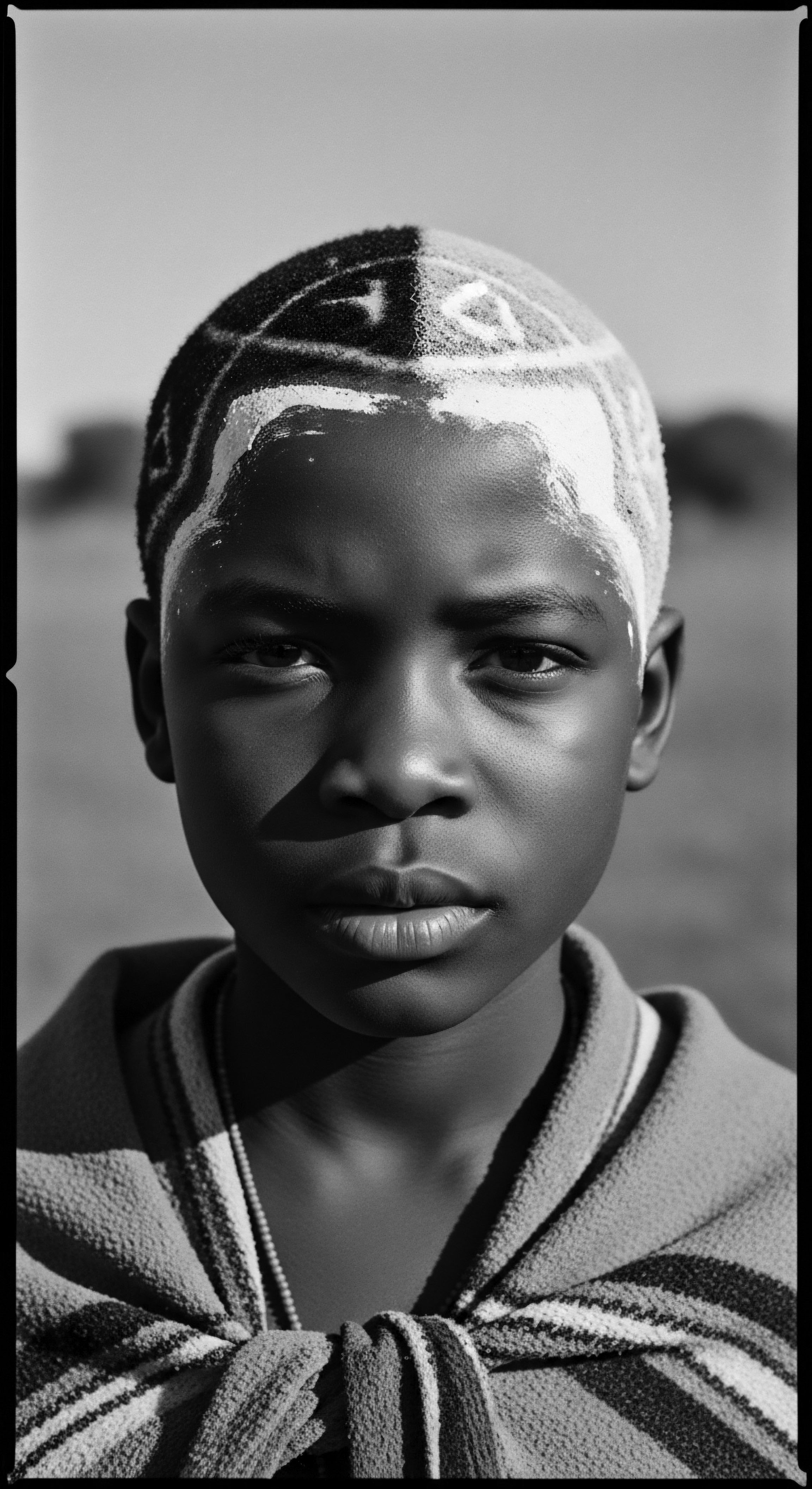
References
- Byrd, A. D. & Tharps, L. I. (2001). Hair Story ❉ Untangling the Roots of Black Hair in America. St. Martin’s Press.
- Jacobs-Huey, L. (2006). From the Kitchen to the Salon ❉ Language and Cultural Co-Construction in the African American Beauty Industry. University of California, Berkeley.
- Mercer, K. (1994). Welcome to the Jungle ❉ New Positions in Cultural Politics. Routledge.
- Patton, T. D. (2006). Bigger Than Braids ❉ Hair, Gender, and Race in the Twenty-first Century. University of Missouri Press.
- Rooks, N. (1996). Hair Raising ❉ Beauty, Culture, and African American Women. Rutgers University Press.
- Leach, E. (1958). Magical Hair. Journal of the Royal Anthropological Institute of Great Britain and Ireland, 88(2), 147-164.
- Hallpike, C. R. (1969). Social Hair. Man, 4(2), 256-264.
- Banks, I. (2000). Hair Matters ❉ Beauty, Power, and Black Women’s Consciousness. New York University Press.
- Delaney, C. (1994). Untangling the Meanings of Hair in Turkish Society. Anthropological Quarterly, 67(4), 159-172.
- Davis-Sivasothy, A. (2011). The Science of Black Hair ❉ A Comprehensive Guide to Textured Hair Care. SAJA Publishing Company.
